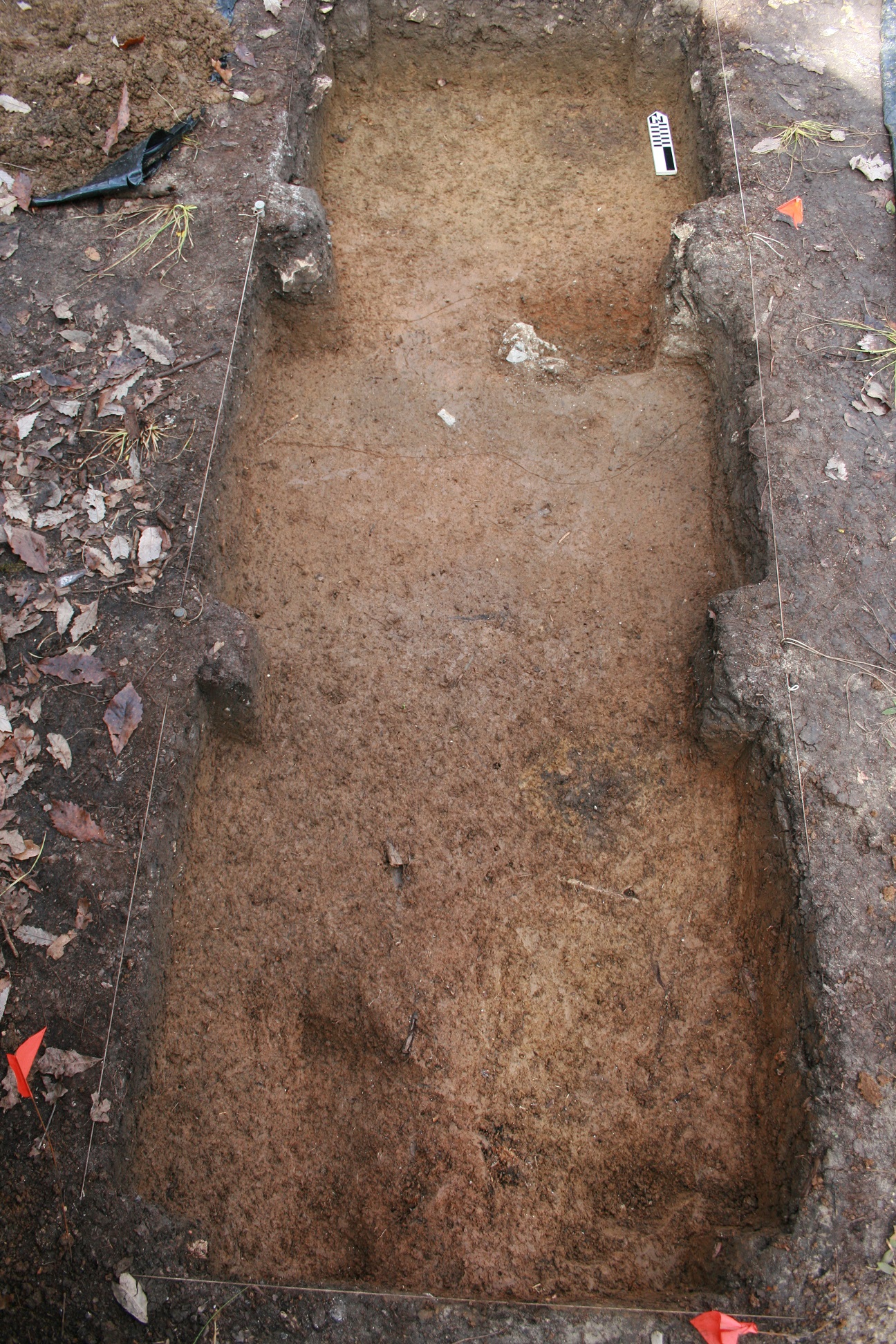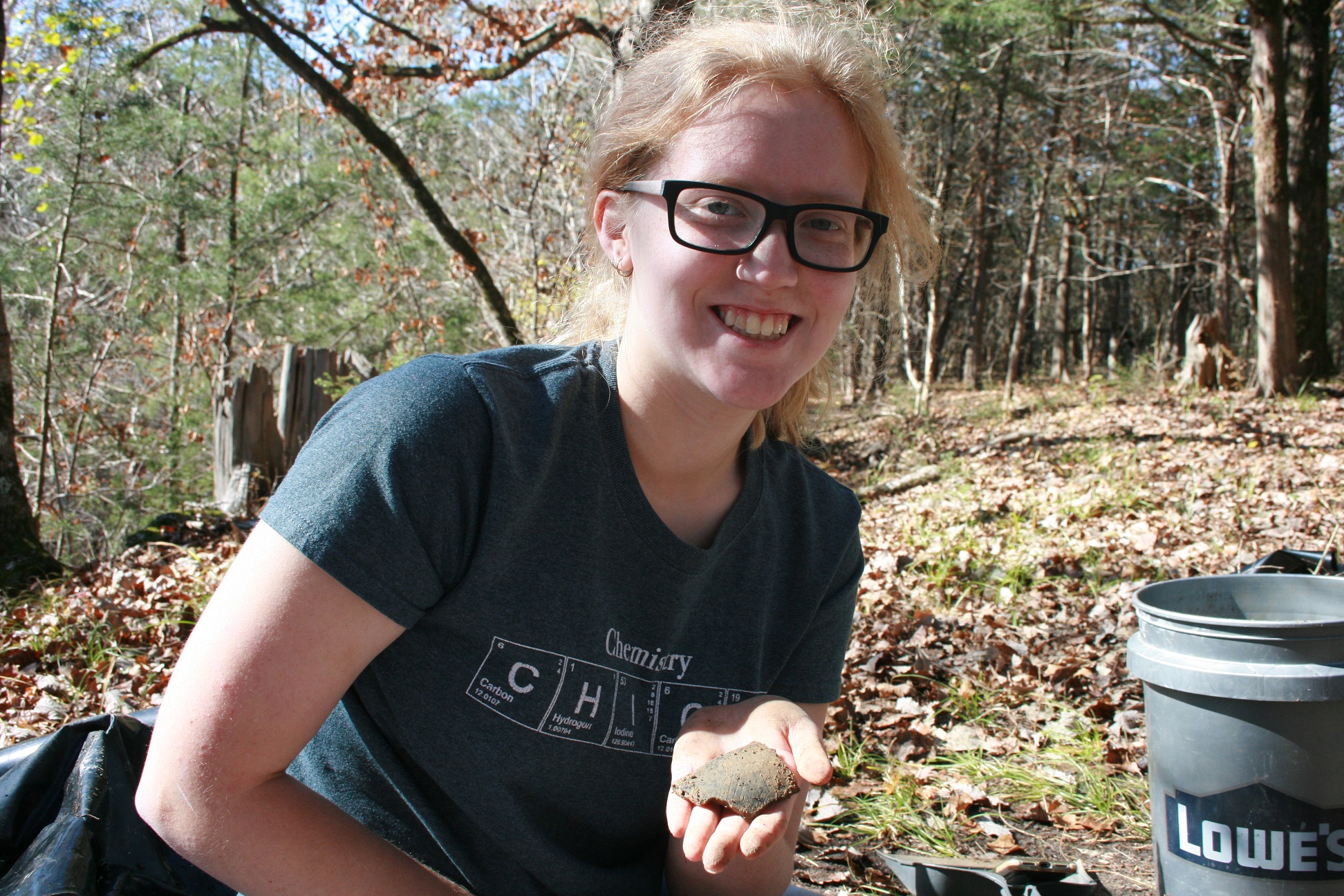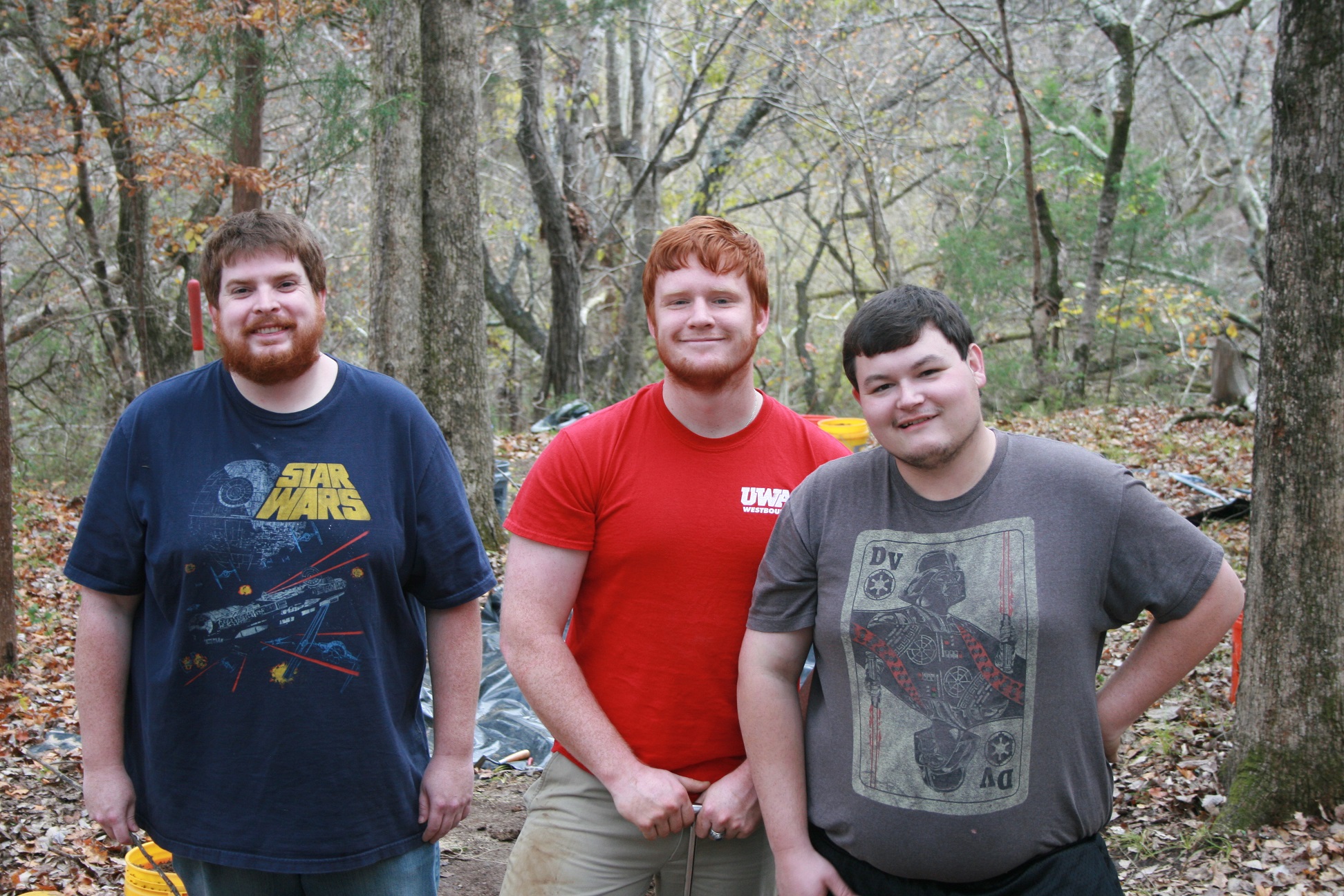Week of December 3by Ashley Dumas
We worked three days this week. Sparky redrew the east profile for Unit 201 and finished his notes on this interesting unit. It has the most detailed and clear stratigraphy of any unit we have excavated at the site and will likely continue to inform us about the history of the site when all the dirt is screened. He lined the unit with plastic and backfilled it with sand. Units 203, 204, and 205 were cleaned off so that we could see possible features and draw the units. There is definitely a small trench about 20 cm wide running east-west between 203 and 204. It has chunks of chalk and artifacts such as bone fragments and nails in it. We did not, unfortunately, have time to excavate all of it, but it is well-photographed, paperwork was started, and it will relatively easy to access again in the future. In one corner of Unit 205 was a slightly darker patch of clay. I bisected it and found it to be a small depression about 15 cm deep and, to my surprise, it produced a fragment of Choctaw pottery, lead shot, a brass "eye" from a hook-and-eye closure, and bone fragments. I might have called it an unremarkable depression in the midden if it hadn't been for the abundant fragments of chalk. We are learning that post holes or bases of posts are characterized at the fort by chunks of chalk, from many tiny bits to double-fist-sized chunks. The chalk seems to have been used to support the posts, and we are finding only the remnants of the bases, and/or the chalk was used to chock posts as they rotted. This Unit 204 feature was recorded as a possible post, drawn, and photographed.

As a series of three adjacent one-meter square units, 203, 204, and 205 are unusual in that the color of the clay changes. It is yellowish brown in 203 but becomes more orange toward 205 in the south. However, there is a stark difference between the eastern and western halves of 205, the former being strong orange and the latter more brown. If we are correct about clay being brought in from elsewhere, then the color differences may represent different loads of clay from different sources. After all three units were documented, they were carefully lined with plastic and backfilled.
Sarah worked vigorously to finish Unit 212 and was aided by Daniel. the bottom of the unit, where the Layer B midden meets the chalk bedrock, was undulating and of varying depths. The east-west trench we'd seen in 2014 is there, but it turns out to take up the entire width of Unit 212! The deepest part is on the southern end, only a few feet from the edge of the ravine. It seems certain now that the trench was dug for a palisade wall that is not depicted on the 1737 map of the fort (see Virtual Tour section of the website). The midden, just like the midden that was found inside the palisade wall in 2012 and 2014, is full of artifacts: bones, European and Choctaw ceramics, nails, glass, and a possible British gun spall. We ran out of time before we could completely excavate the trench, so we will did not backfill this unit. I hope to return over the Christmas break and complete the feature.
So! between August and December, the students shovel tested west and north of the fort. They confirmed the lack of much activity just west of the fort but discovered that Indian occupation north of the fort was more extensive in space and time than previously understood. The pottery from tests there suggests that it was a village as early as 1500 years ago. Only a single musket ball can tie that area to the historic period, but now we know where to look more closely in the future.
At the fort itself, we completed several important units that had been last been excavated in 2014 but had left us a bit confused, and we found two new features. The trench feature near the ravine is particularly exciting, and I'll keep you all updated on what it turns out to look like and what sort of artifacts are associated with it.
Finally, I want to brag on this bunch of students, all of them Anthropology minors. One of them took the initiative to inquire about museum internships at the Irish National Museum. One of them has applied for contract archaeology jobs in Alabama to get more experience and has designed a specialized major in order to take more Anthropology courses. Another applied to and was accepted to a field school in Poland and has submitted applications to graduate programs. And another is arranging for a year in France, where I know he will find fabulous archaeology and might be asked to do some archival research for one of his professors (hint hint!). Most importantly, these UWA undergraduates are simply a pleasure to be around. Their initiative, dedication, and curiosity give them a permanent invitation to work at Fort Tombecbe or any site with which I'm associated.

